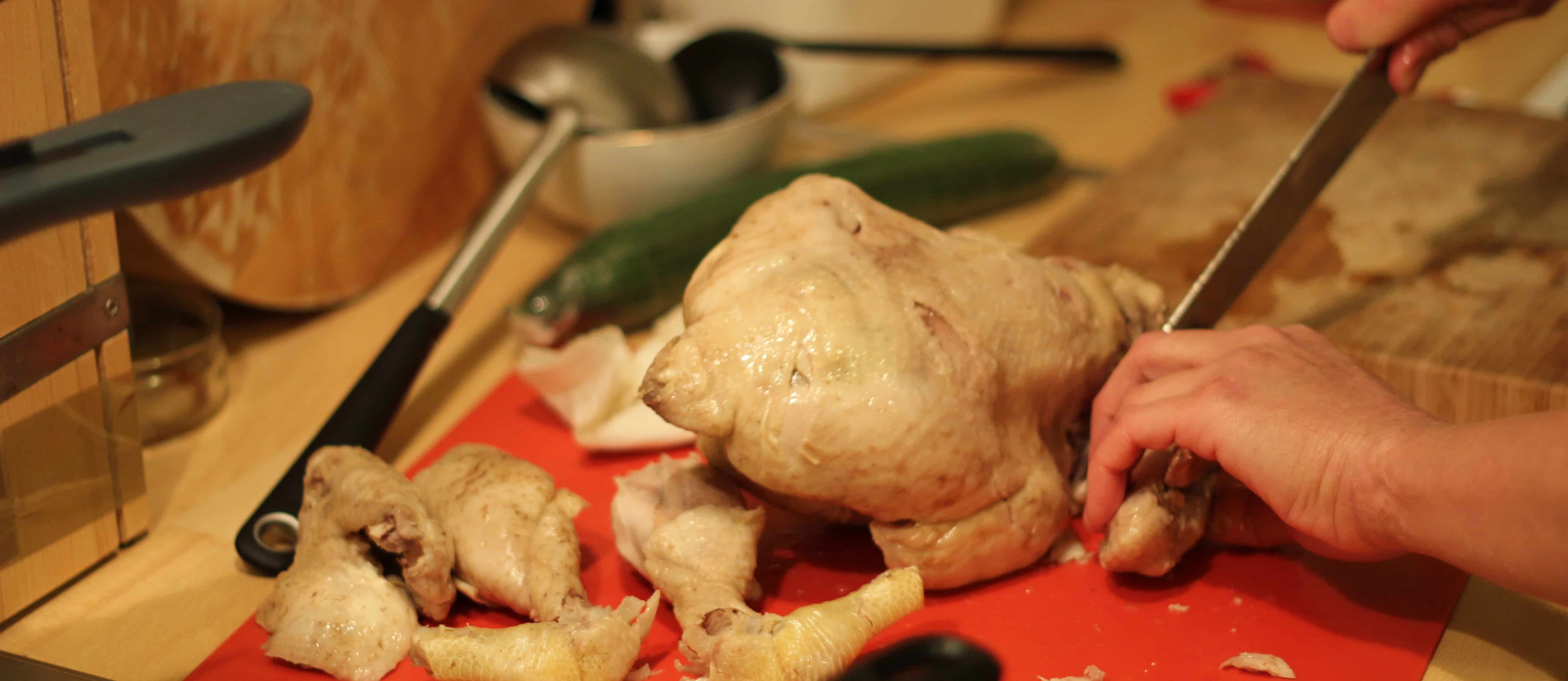When researchers last year at the Emerging Pathogens Institute ranked foodborne pathogens to figure out which was the worst, Salmonella was number one on their list. Salmonella was ranked the food poisoning bacteria with the greatest public health burden on our country, the leading cause of food poisoning hospitalization, and the number one cause of food-related death. Where do you get it from?
In my video Total Recall I talked about the threat of eggs. According to the FDA, 142,000 Americans are sickened every year by eggs contaminated with Salmonella. That’s an egg-borne epidemic every year. But Salmonella in eggs was only ranked the tenth worst pathogen-food combination. Salmonella in poultry ranks even worse, the fourth worst contaminated food in the United States in terms of both cost and quality-adjusted years of life lost. In terms of getting Salmonella poisoning from various U.S. foods, eating chicken may be eight times riskier than eating eggs.
Due to strengthening of food safety regulations under the Clinton administration, the number of Americans poisoned by chicken dropped every year from about 390,000 to 200,000. This was rightly hailed as a significant accomplishment. So now eating chicken only sickens 200,000 people in the U.S. every year. Isn’t that a bit like some toy company boasting that they’ve reduced the amount of lead in their toys and they’re now poisoning 40 percent fewer kids? Hundreds of thousands sickened isn’t exactly something to boast about, and the numbers have since rebounded upwards.
Since the late ’90s human Salmonella cases have increased by 44 percent. The rebound in incidence of Salmonella infection is likely a result of several factors, but one important risk factor singled out is eating chicken, since the proportion of chicken carrying infection has increased. When people think manure in meat they typically think ground beef, but when you look at E. coli levels there’s fecal matter in about 65 percent of American beef, yet in more than 80 percent in poultry (chicken and turkey).
Why have we seen a decrease in the Jack-in-the-box E. coli O157 but not chicken-borne Salmonella? In the last decade or so, E. coli infected beef and children has dropped by about 30 percent. Salmonella, on the other hand, has actually increased over the last 15 years. One reason for the difference is that the O157:H7 was declared an “adulterant,” defined as any poisonous or deleterious substance that may render meat injurious to health. So selling E. coli laden beef is illegal.
Why is beef laced with E. coli contaminated fecal matter considered adulterated, but chicken laced with Salmonella contaminated fecal matter okay? Salmonella certainly kills more people than the banned E.coli. It all goes back to a famous case I detail in my video Salmonella in Chicken & Turkey: Deadly But Not Illegal, when the American Public Health Association sued the USDA for putting its stamp of approval on meat contaminated with Salmonella.
What could the USDA possibly say in meat’s defense? They pointed out that there have been Salmonella outbreaks linked to dairy and eggs, for example, too, so since “there are numerous sources of contamination which might contribute to the overall problem.” It would be “unjustified to single out the meat industry and ask that the Department require it to identify its raw products as being hazardous to health.” That’s like the tuna industry arguing there’s no need to label cans of tuna with mercury levels because you can also get exposed eating a thermometer.
The DC Circuit Court of Appeals upheld the meat industry position, arguing you can allow potentially deadly Salmonella in meat because, “American housewives are…normally are not ignorant or stupid and their methods of preparing and cooking of food do not ordinarily result in salmonellosis.” What?! That’s like saying oh, minivans don’t need seatbelts because soccer moms don’t ordinarily crash into things.
I’ve talked about this travesty before in my blog post Why is it Legal to Sell Unsafe Meat? and video Unsafe at Any Feed. Don’t worry, though, the meat industry is on it! See my videos Viral Meat Spray and Maggot Meat Spray (if you dare! :)
My video Food Poisoning Bacteria Cross-Contamination explains that raw meat can be dangerous no matter how long you cook it and Fecal Bacteria Survey features an industry trade journal explaining the difference between the attitude in Europe and The United States.
The Center for Science in the Public Interest has petitioned the USDA to bar the sale of Salmonella-contaminated meat, but so far to no avail.
-Michael Greger, M.D.
PS: If you haven’t yet, you can subscribe to my videos for free by clicking here and watch my full 2012 – 2015 presentations Uprooting the Leading Causes of Death, More than an Apple a Day, From Table to Able, and Food as Medicine.
